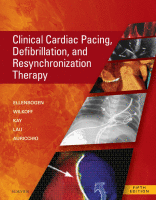Physical Address
304 North Cardinal St.
Dorchester Center, MA 02124

The Ethics of Cardiac Implantable Electronic Device Reuse Cardiovascular disease is the leading cause of death in high-income countries. The notion that it is also responsible for the majority of deaths in low- and middle-income countries (LMIC) is less intuitive.…

Clinics for the Follow-Up of Cardiovascular Implantable Electronic Devices The story of cardiovascular implantable electronic devices (CIEDs) started in 1958 with the first pacemaker (PM) implant performed at Karolinska Hospital in Stockolm and evolved with the first implant of an…

Introduction Cardiac implantable electrical devices (CIEDs) have undergone revolutionary changes in the last decade. These changes have permitted an increase in the use of both pacemakers and implantable cardioverter defibrillators (ICDs), collectively known as CIEDs. Pacemakers were the first generation…

Patients with cardiac implantable electronic devices (CIEDs) frequently undergo other surgical procedures in which there may be interference with operating room (OR) equipment. When the number of patients with CIEDs was small and CIEDs had few features, perioperative and periprocedural…

Aside from direct therapeutic ability, cardiovascular implantable electronic devices (CIEDs) have a sophisticated capacity to identify, quantify, and present diagnostic data regarding their own performance and also patient condition (e.g., arrhythmias, hemodynamic parameters). Attention to these may facilitate device and/or…

Introduction In two decades the invention of transvenous left ventricular (LV) pacing integrated to a conventional pacemaker (cardiac resynchronization pacemaker, CRT-P) or an implantable cardioverter-defibrillator (CRT-D) has offered an effective therapy for patients with mild to severe heart failure (HF).…

Since its introduction into clinical practice in the early 1980s, the implantable cardioverter-defibrillator (ICD) has evolved from a treatment of last resort for aborted cardiac arrest to the treatment of choice for the management of resuscitated cardiac arrest and, more…

Acknowledgment: The author would like to acknowledge the excellent chapter on pacemaker troubleshooting and follow-up from the previous edition of this book, which was authored by Dr. Charles J. Love, with contributions by Dr. Paul A. Levine, and which formed…

Acknowledgment: The author would like to express his sincere gratitude to Wyatt Stahl (Boston Scientific), Benjamin Coppola (St. Jude Medical), Pam Elrod (Medtronic), and David Thomas (Biotronik) for their review and comments on sections pertinent to their devices in the…

Introduction Lead extraction or removal is increasingly required given the increased numbers of cardiovascular implantable electronic devices (CIED). The number of extractions or lead removals has increased due to increasing infection rates, expanded indications such as the need to upgrade…